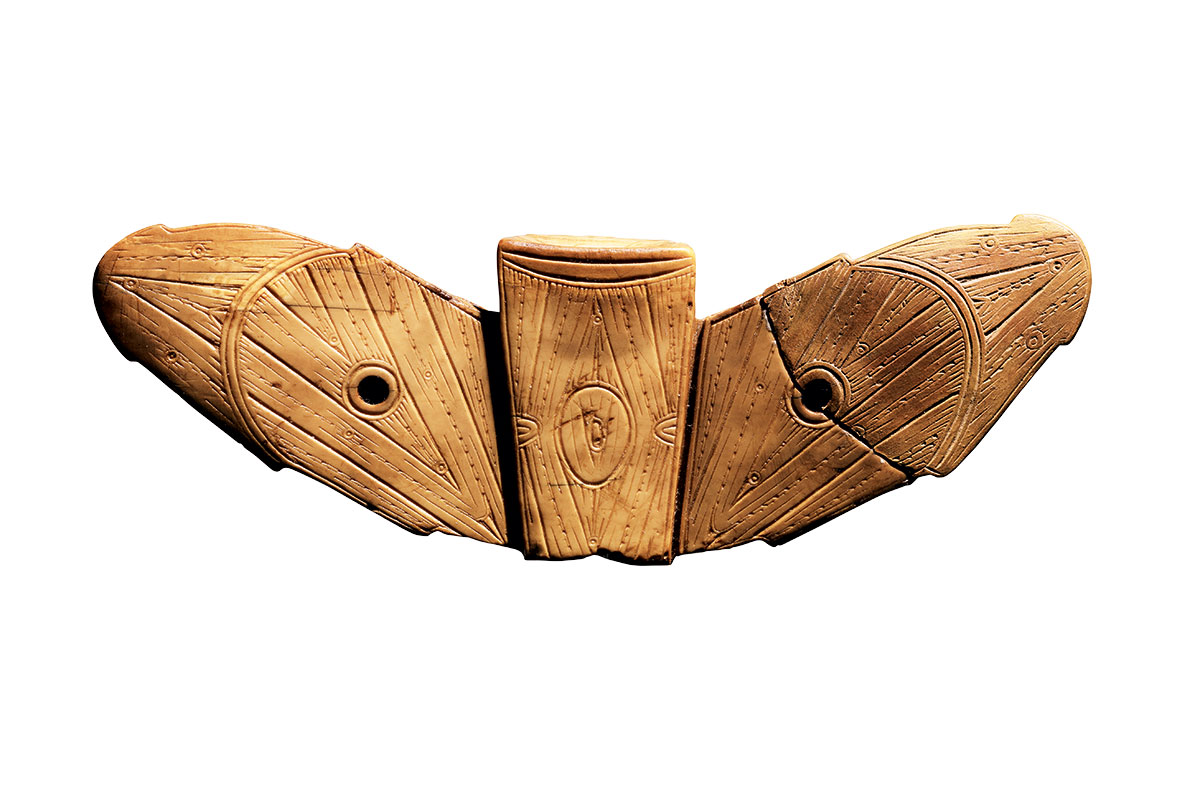Winged Object
St. Lawrence Island, Alaska
100 – 300 CE
marine mammal ivory
width: 5 ¼"
Inventory # E4120-74
Sold
Provenance
Sotheby’s, New York, NY, May 24, 1994, lot 238
Bill and Carol Wolf, NJ
Published
Art of the Arctic: Reflections of the Unseen (Ivories), Ellis, London, Black Dog Publishing, 2015, pg. 57, pl. 42
Related Examples
The State Museum of Oriental Art, Moscow, cat. no. 132Dp-IV – See: Leskov, A.M. and Muller-Beck, H. Arktische Waljager vor 3000 Jahren: Unbekannte Sibirische Kunst. Munich: v. Hase & Koehler Verlag, 1993, pg. 116, pl. 73.
Museum of Anthropology and Ethnography, Saint Petersburg, Russia, cat. no. ? – See: Aruti︠u︡nov, Sergei and Aleksandrovich, Sergeev, D. A. Problems of Ethnic History in the Bering Sea : the Ekven Cemetery. Anchorage: Shared Beringian Heritage Program, 2006, pg. 139, fig. 61, no. 17.
The toggle harpoon of the prehistoric Inuit is a marvel of engineering. At the front is an ivory point, usually fitted with a sharpened stone blade. The point is attached to a small ivory foreshaft, which allows it to pivot after striking the quarry, thus burrowing deep into the flesh of the animal. The foreshaft is fitted into a cylindrical ivory socket piece which in turn is fastened to the front of a large wooden shaft. At the rear of the shaft, an ivory counterweight or “winged object” is often attached.
Over the course of approximately 1000 years spanning several different cultural periods, the basic design of the counterweight underwent a sequential evolution of design. What began as a more simple block device in the Okvik period (200 BC – 100 AD) evolved during the Old Bering Sea III phase (300 – 500 CE) into a highly developed art form, as demonstrated by the beautiful example illustrated here.

